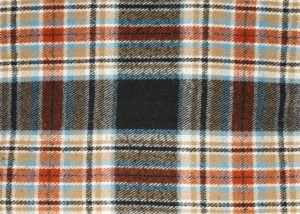5 Fabrics that My be Rubbing You the Wrong Way
Most people give little thought to whether or not the clothes they wear are toxic, even if they take care to eat organic foods and use natural cleaners at home. However, many of the fabrics we wear on our skin are filled with chemicals that clothing manufacturers would prefer consumers didn’t think about.
A century ago, clothing was made of natural fibers like wool, silk, cotton and flax, but if you take a look at your clothing labels today, you are likely to find materials like polyester, acrylic, rayon, acetate and nylon. Many clothing items are also treated to be wrinkle-free or stain resistant. Our clothing, a 7 trillion dollar a year industry, is made using a massive 8,000 different synthetic chemicals.
These toxins are absorbed through our body’s largest organ, the skin, contributing to your toxic burden, and possibly triggering the onset of disease. Multiple chemicals can interact to create even worse problems. Just a few of the common issues they may trigger include fatigue, itching, burning, nausea, skin rashes, difficulty breathing and headaches.
Polyester. Polyester is one of the worst offenders, made from synthetic polymers derived from esters of dihydric alcohol and terephthalic acid. Most polyester is produced using antimony as a catalyst. In addition to being a carcinogen, antimony is toxic to the heart, lungs, liver and skin. There is also a concern that it may leach phthalates, which are hormone disrupting chemicals, particularly on a hot summer day due to perspiration.
Rayon. This fabric is made out of recycled wood pulp that has been treated with chemicals like ammonia, acetone, caustic soda and sulphuric acid in order to hold up to regular washing and wearing.
Acrylic. Acrylic fabrics are made using acrylic acid, a substance which the EPA reports is a strong irritant to the skin, eyes and mucous membranes. Its link to cancer has not been researched, but it is a possible mutagen and reproductive toxin, and is toxic to the bladder, brain, upper respiratory tract, eyes and central nervous system.
Acetate. This material is made from wood fibers known as cellulose, which undergo extensive chemical processing to produce the end product.
Nylon. This fabric is made from petroleum and is often given a permanent chemical finish that can be harmful.
 Keep
in mind that clothing items that are labeled “stain resistant,”
“permanent press,” “wrinkle-free” or “static resistant” are treated with
a host of chemicals, including PFCs (perfluorinated chemicals) like
Teflon.
Keep
in mind that clothing items that are labeled “stain resistant,”
“permanent press,” “wrinkle-free” or “static resistant” are treated with
a host of chemicals, including PFCs (perfluorinated chemicals) like
Teflon.Although there aren’t any absolutely perfect alternatives, in general, natural, organic fabrics, produced without chemical assistance or additives, are the best fabrics for our families and environment. Consider materials like organic cotton, flax, hemp, silk (without the addition of synthetic dyes) and organic wool.
-The Alternative Daily
No comments:
Post a Comment